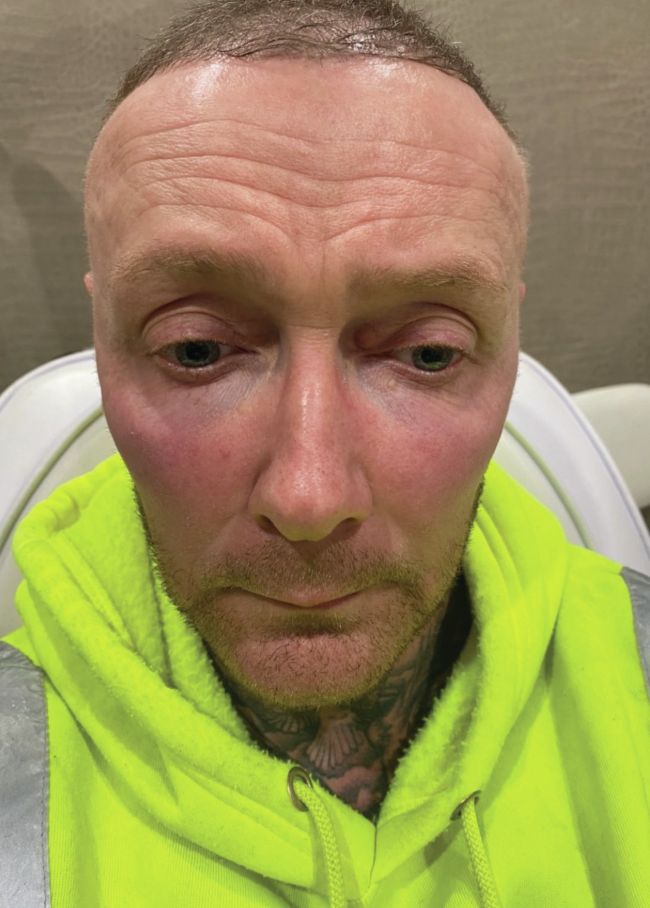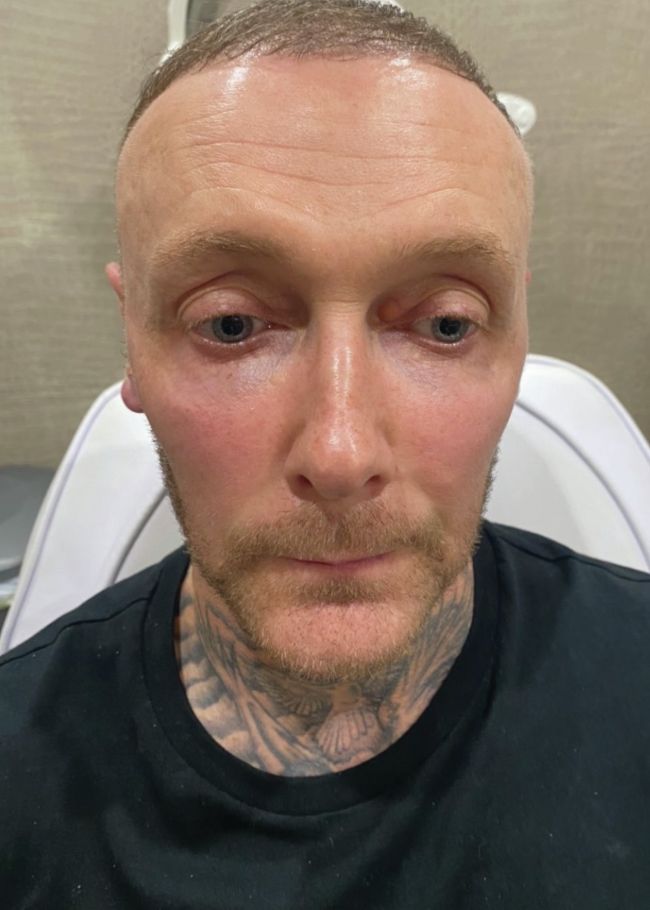PATIENT OVERVIEW
Patient: Male
Age: 46
Profession: Construction worker
Practitioner: Dr WM Nawaz
Product Intervention: botulinum toxin type A (Allergan Botox)
Presenting Complaint: Deep expression lines and tired appearance
Treatment approach: Targeted toxin with masculinity in mind
As the aesthetics industry continues to evolve, one area seeing consistent growth is male patient interest in botulinum toxin. Once considered a taboo subject, aesthetic interventions are now increasingly viewed by men as an extension of self-care and demand is rising.
But treating the male face isn’t simply a case of increasing the dose. Understanding anatomical differences, lifestyle factors, and the subtle aesthetic goals specific to male patients is critical to achieving natural, masculine results. Here, we explore a recent case from a 46-year-old male patient, illustrating best practice for treatment planning and execution with toxin.
PATIENT PROFILE
This 46-year-old construction professional leads a physically demanding lifestyle. He’s committed to fitness, particularly weight training and operates in a high-stress environment. Over time, he began to notice the deepening of expression lines across his forehead, glabella, and around the eyes, giving him what he described as a “tired, older” appearance that didn’t match how he felt.
His goal was simple: to look fresher and more approachable, without compromising natural movement or losing masculine definition.
AREAS TREATED & UNITS USED
• Forehead (Frontalis): 15 units
• Glabella (Procerus + Corrugators): 20 units
• Crow’s feet (Orbicularis Oculi): 7.5 units per side (15 total)
Total dose: 50 units of botulinum toxin type A (Allergan Botox), reconstituted with 2.5 ml bacteriostatic saline.
INJECTION TECHNIQUE
• Forehead: Shallow intramuscular injections using a conservative, lateral-focused approach. Preserving lateral frontalis movement is essential to avoid brow heaviness and maintain a natural, expressive look
• Glabella: Standard five-point V-pattern targeting the corrugators and procerus with deeper intramuscular injections to effectively soften frown lines
• Crow’s feet: Superficial injections placed carefully along the lateral canthal lines, avoiding diffusion into adjacent smile muscles like the zygomaticus major.
ADJUSTMENTS FOR MALE ANATOMY
• Higher dose requirement: Male patients generally need higher unit volumes due to stronger muscle mass and increased dynamic activity

Before

After
• Broader injection mapping: The male forehead tends to be wider and flatter, necessitating a more horizontal distribution of toxin to prevent unnatural “peaked” brows or asymmetry.
RESULTS & FOLLOW-UP
At the four-week review, results were visibly evident and well-balanced:
VISUAL OUTCOME
• Softening of both static and dynamic forehead and glabellar lines
• Noticeably reduced crow’s feet
• Maintained movement in key facial areas, avoiding the over-smooth or “frozen” look.
PATIENT FEEDBACK
The patient reported feeling more rested and confident, noting that colleagues commented on his “healthier, less stressed” appearance. He appreciated the natural finish, especially retaining full facial expression.
LONGEVITY & MAINTENANCE
• Expected duration: Three-four months
• Maintenance plan: Repeat treatments every three-four months, with slight adjustments based on seasonal muscle activity or lifestyle changes (e.g., stress levels, training intensity).
CLINICAL REFLECTIONS: TREATING THE MALE FACE
While female patients often seek smoothing and softening, male patients typically want to retain rugged features, just with less fatigue and tension. Here are a few key principles to guide male toxin treatments:
• Understand strength and structure: Men’s glabellar and frontalis muscles are denser and more active. Don’t be afraid of using higher doses, but ensure dosing is strategic to preserve expression
• Respect the natural aesthetic: Avoid feminisation. Keep the brow flat (not arched), and always maintain lateral frontalis activity for natural movement
• Speak their language: Men are more likely to respond to terms like “refreshed,” “strong,” “defined,” and “rested” over “youthful” or “smooth.”
MARKET INSIGHT: THE RISE OF THE AESTHETIC MALE
Men now account for approximately 15% of global toxin treatments and that figure is expected to grow. With growing cultural acceptance, aesthetic treatments are becoming part of men’s grooming routines.
MARKETING TO MALE PATIENTS
• Avoid overly clinical or beauty-focused language
• Use real male case studies and visuals to demystify treatment
• Highlight subtle, natural outcomes over dramatic transformations
• Position toxin as part of “performance” and confidence, rather than vanity.
With thoughtful planning and a tailored approach, practitioners can deliver powerful yet subtle results that keep male clients coming back for more.